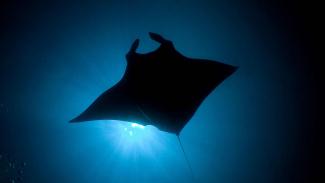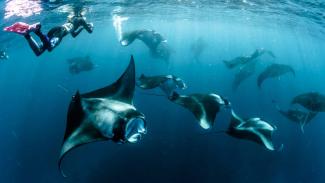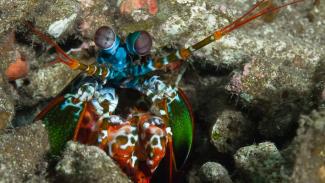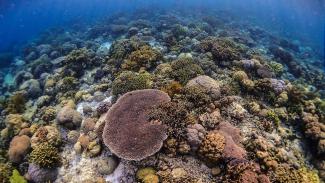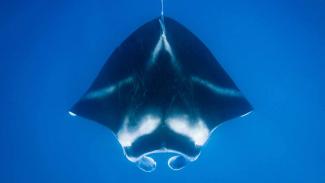
Nicolas Welding
Lying off the west coast of the Philippines island of Mindoro Island is Apo Reef, a huge coral reef system. This reef is in fact the second largest single coral reef in the world.
The geography of the reef has created two internal lagoons, with spectacular plunging walls around the outside, comprising a total area of 34sq km.
The reef is a magnet for marine life, with plenty of Shark sightings, Manta Rays and many more impressive animals.
Highlights
Best diving spots
On the east side of Apo Reef is Shark Ridge. Sloping down to around 25m, this ridge is an excellent place to find Blacktip & Whitetip Reef Sharks. Manta Rays often cruise the area as well. G
oing anti-clockwise around the reef, you come to Binangaan Drop-off. This impressive wall, dropping down to great depths, has beautiful gorgonians sea fans and a huge amount of life. Large Groupers, schools of Snapper & Bumphead Parrotfish can be seen here. Just off from the reef, plenty of pelagics, including large Tuna, can be spotted.
Looking for the latest liveaboard deals in the Philippines? Find your deal
Continuing around the perimeter of the reef, the walls get even deeper, reaching around 900m on the northern side. Currents tend to be strongest on this northern side of the reef, but that brings plenty of action, with Manta Rays & Scalloped Hammerhead seen from time to time.
To the west of the main reef is Apo Island. Dwarfed by its neighbour, Apo Island is a match for its big brother underwater (this is not to be confused with Apo Island in the Visayas). Again, dramatic walls adorned with impressive corals are the main feature. The reef is teems with life .Turtles are a common sight and numerous species of Shark can be seen. Manta Rays are known to visit as well.
Further west again is Hunters Rock. This island is completely submerged, starting at about 10m. The reef here is excellent with similar life to Apo, but the main draw, especially in June & July, are the Sea Snakes, or Banded Sea Kraits, that come here to breed in their thousands. Nearby, Merope Rock is also a submerged rock that has no shortage of big fish, including plenty of Shark action. Hunters Rock & Merope Rock are only for experienced divers due to the lack of protection from currents. Apo 29 is another underwater sea mound for the advanced diver with lots of big-fish action.
Closer to the coast of Mindoro is Pandan Island. With one resort, it is the closest place from which to reach Apo Reef. There is also diving on Pandan, with gentle coral slopes providing shelter to all manner of interesting marine life.
When to dive
Apo Reef can be dived all year round, but June - October brings a higher chance of rain and rough seas.
Getting there
Liveaboards are possibly the best way to dive Apo Reef due to its remote location, although trips only run at certain times of year. The closest dive centre and resort is Pandan Island, 90 minutes boat journey away. Overnight safaris can also be arranged from Mindoro.
Activities
These are remote reefs, with no activites beyond the wonderful diving or snorkelling. There are land-based activities on Mindoro and Pandan Island.
Resort and liveaboard options
With a relatively remote location, possibly the best option to do Apo Reef justice is to join a liveaboard. However, liveaboards only visit seasonally, often combining Apo Reef with the wrecks of Coron to the south-west.
We recommend the team at Liveaboard.com to find your Apo Reef liveaboard adventure
While there are no resorts on Apo Reef itself, resort-based dive centres in the wider region do offer trips to Apo Reef as either all day trips departing early in the morning, or overnight safaris.
You might also enjoy...
Tubbataha Reef
Tubbataha Reef in the Philippines may be the country's most famous diving spot, certainly for larger marine life. This small group of islands and atolls that give their name to the Tubbataha Reef National Park lie at the centre of the Sulu Sea.
The depth of the sea brings cold, nutrient rich waters to the surface around these remote atolls. This brings not only large marine life, but a huge biodiversity too.
East Kalimantan
On the east coast of Kalimantan, a little south from the world famous Sipadan area, are more equally impressive, but less well-known islands & reefs.
These difficult to reach dive sites are now beginning to open up to divers - and the intrepid travelers who make it this far will not be disappointed.
Scuba diving in Borneo - 7 key questions answered
Tara North


